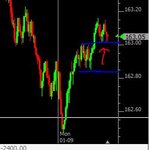So there are two types of traders in this world: retail traders & institutional traders. Retail traders are individuals who trade on their own, with their own capital, based on their own analysis. Institutional traders are often professionals, who trade hundreds of millions of dollars of a firm's capital, based on the analysis from the firm's research departments. Upwards of 90% of retail traders lose money trading Forex, which means upwards of 90% of institutional traders are making money.
Surely such institutional traders know how the retail traders think and where they might be entering into the market and putting their stop losses. In addition many of them have access to order books and can see entries and stop losses. So rather than trying to trade like the retail traders and getting your stop losses "hunted", why not try to trade like the institutions.
Perfect example... the "head and shoulders" pattern. It is a very retail minded trade. Many retail traders use this pattern to enter into the market, but essentially it is just a break out trade. The point at which price breaks out of the head and shoulders pattern is where many traders enter into the trade. If the trade goes in their favor many put their stop to break even.... or the point at which price broke out of the pattern. It is not a coincidence that you often see price very quickly come back to that point and "retest it". It is retesting the level for a reason... to stop out those short sellers with their stops at break even (essentially triggering buy positions) that the institutions will sell to for an optimal entry.
Think like an institution, not like a retail trader, and you will see a massive improvement in your trading.

